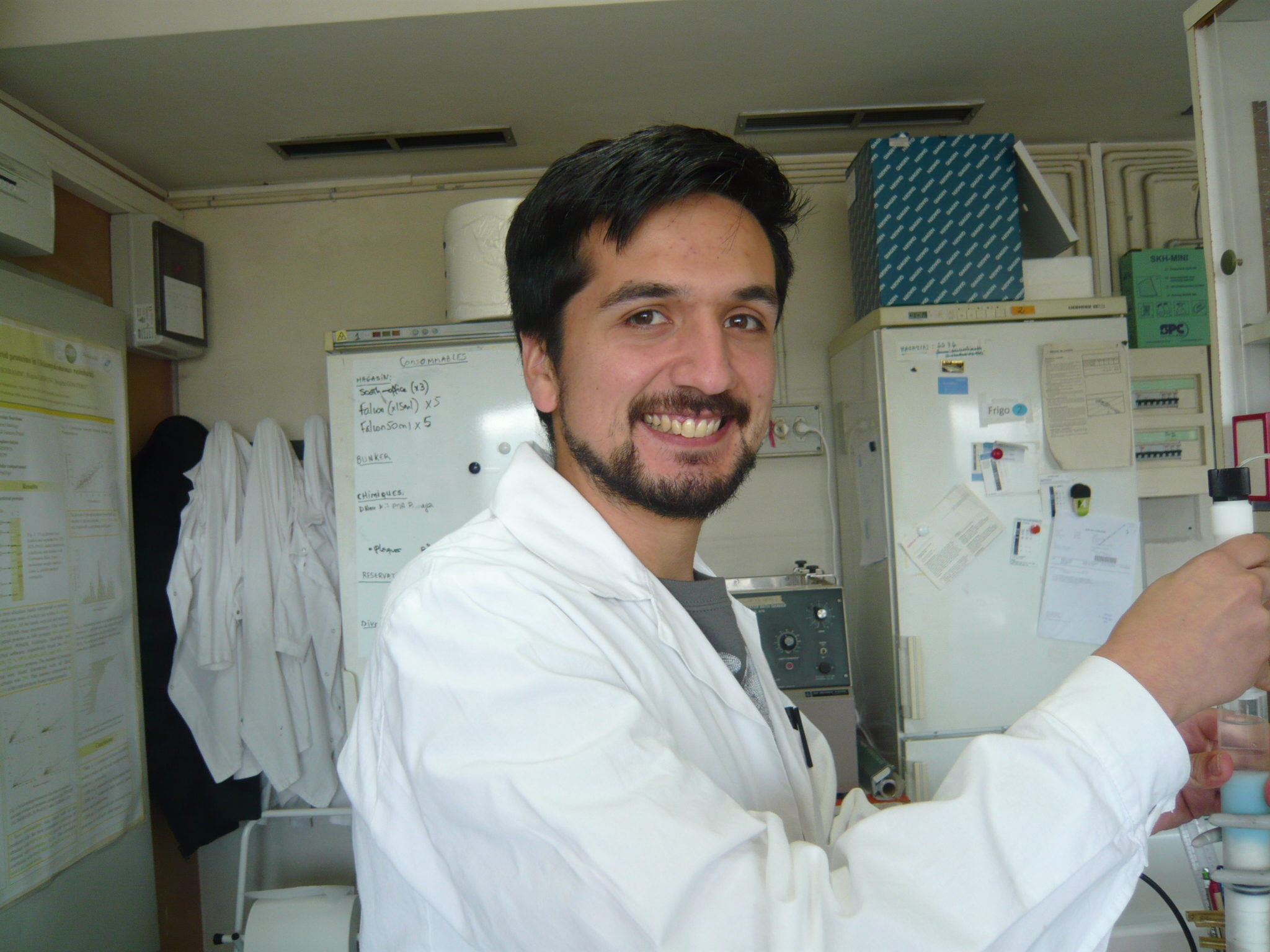Aix Marseille Univ, CNRS, BIP, UMR 7281, IMM, FR3479, Marseille A new widespread subclass of carbonic anhydrase in marine phytoplankton The ISME journal. DOI: 10.1038/s41396-019-0426-8 Jensen Erik L., Clement Romain, Kosta Artemis, Maberly Stephen C., Gontero Brigitte.
Cv
Erik Jensen (Chilean, 29 y.o) has obtained his bachelor’s degree on Biotechnology engineering and his master’s degree in Biotechnology at Andres Bello University in Santiago de Chile. He is currently doing his PhD at the laboratory of Bioenergetics and Protein Engineering (BIP), from the Mediterranean Institute of Microbiology (IMM), under the supervision of Dr Brigitte Gontero (BIP02 team). His research is focused in a new low CO2-inducible protein (called LCIP63) found in the marine diatom Thalassiosira pseudonana. This work, recently published in The ISME Journal, describes that LCIP63 is a carbonic anhydrase (CA), a member of the new iota subclass (ι-CA). Moreover, LCIP63 is likely to play a role in the diatom CO2-concentrating mechanisms and it also occurs in other marine phytoplankton, thus it might be important for global carbon cycling.
Contact
This email address is being protected from spambots. You need JavaScript enabled to view it.
Aix-Marseille Université / CNRS
BIP02
Laboratoire Bioénergétique et Ingénierie des Protéines;
Enzymologie de Complexes Supra-moléculaires.
31 Chemin Joseph Aiguier
13 402 Marseille Cedex 20
Abstract
Most aquatic photoautotrophs depend on CO2-concentrating mechanisms (CCMs) to maintain productivity at ambient concentrations of CO2, and carbonic anhydrase (CA) plays a key role in these processes. Here we present different lines of evidence showing that the protein LCIP63, identified in the marine diatom Thalassiosira pseudonana, is a CA. However, sequence analysis showed that it has a low identity with any known CA and therefore belongs to a new subclass that we designate as iota-CA. Moreover, LCIP63 unusually prefers Mn2+ to Zn2+ as a cofactor, which is potentially of ecological relevance since Mn2+ is more abundant than Zn2+ in the ocean. LCIP63 is located in the chloroplast and only expressed at low concentrations of CO2. When overexpressed using biolistic transformation, the rate of photosynthesis at limiting concentrations of dissolved inorganic carbon increased, confirming its role in the CCM. LCIP63 homologs are present in the five other sequenced diatoms and in other algae, bacteria, and archaea. Thus LCIP63 is phylogenetically widespread but overlooked. Analysis of the Tara Oceans database confirmed this and showed that LCIP63 is widely distributed in marine environments and is therefore likely to play an important role in global biogeochemical carbon cycling.




